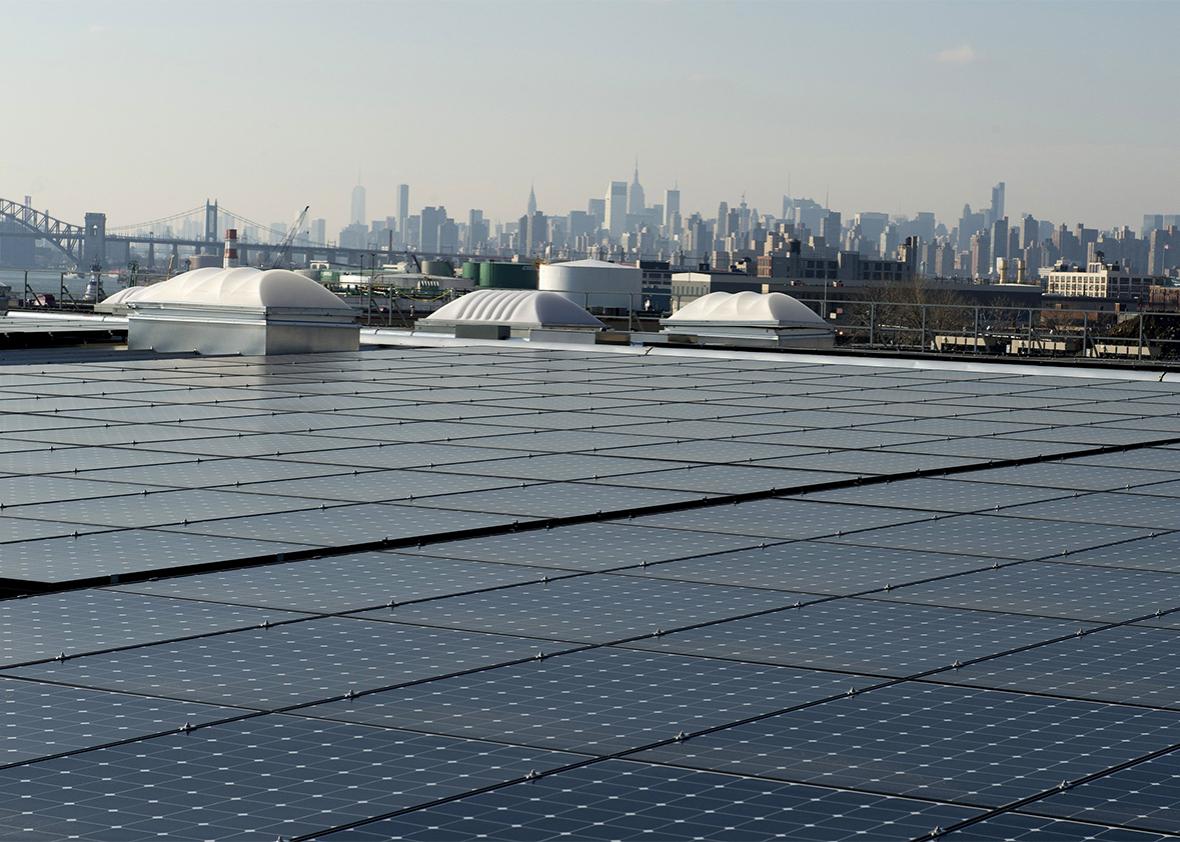When large companies want to save money on their power bills and burnish their green credibility with consumers, their big-box facilities begin to sprout solar panels. Which is why the annual Solar Means Business Report, which ranks corporate solar developers, is filled with highly recognizable brand names: Walmart, Prologis, Apple, Costco, Kohl’s, Ikea, Macy’s.
One of these things is not like the others.
You may not know about Prologis, which at 97.54 megawatts trails only Walmart in the amount of installed rooftop solar capacity in the U.S. The company doesn’t operate stores, doesn’t fret much about what upscale American consumers think about its energy use, and doesn’t even have much energy use to offset.
Despite the low profile of its buildings and its brand, Prologis is a big-time company. It’s the world’s largest owner and operator of warehouses, with a portfolio of thousands of nondescript one- and two-story buildings around the world. Boasting 700 million square feet of space (about 25 square miles) in 21 countries, it has a market capitalization of more than $20 billion. Thanks to emerging trends in the production and regulation of renewables, Prologis has figured out how to turn the ultimate waste of space—the flat roof of a warehouse—into an emissions-reducing, money-producing power plant.
Retailers like rooftop solar in part because the juice that the panels produce can offset the high electricity bills created by their lighting, refrigeration, heating, and computers. But warehouses have a different energy profile. Prologis’ buildings just kind of sit there. “If you imagine what is inside the facility, it’ll be a basic shell, concrete floor, rows of racking filled with pallets, then forklifts driving around the place,” says Matt Singleton, vice president for global energy and development at Prologis. Very few people work inside the warehouses. Offices make up about 5 percent of the space.
So if solar doesn’t cut the power bill much, why does Prologis like it? In a word, it’s all about efficiency—of energy, yes, but also capital and space. “Traditionally the only purpose of the roof was to keep the building dry and secure,” Singleton says. The company plans to own its buildings for decades. And when your capital is tied up in immobile assets for long periods of time, you want to make the best possible use of it. Most real estate owners can maximize revenues by renting out every inch of usable space at all times. But if you can find a way to produce an alternate revenue stream from the same building, it’s gravy. “We were motivated to generate clean power, but also to leverage an underutilized asset,” Singleton says. “This is a for-profit activity.”
Prologis first put solar on warehouse roofs in France and Germany, where electricity is expensive and there were rich incentives for building solar. But in the past several years, the U.S. has become the locus of its sustainability operations and the lion’s share of its solar investment. That’s because the environment has changed dramatically for solar in the U.S. over the past decade. The cost of installation has declined sharply; key tax credits have been renewed; and many states and regions have net metering policies, which allow people to sell excess power into the grid. As a result, the logic of solar is now inescapable for many companies and institutions that own buildings with large, flat roofs. “There needs to be a reliable long-term off-take and purchaser of the power,” Singleton says. And because Prologis is itself a developer and builder, the prospect of constructing arrays wasn’t daunting.
To date, Prologis has put solar panels on more than 100 buildings around the world, with a combined capacity of 140 megawatts. About 70 percent of its installations are in the U.S. Prologis has planted solar on only about 10 percent of its global footprint, in part because the economics don’t yet make sense everywhere it operates, and in part because it is proceeding methodically. The company plans to add about 15 megawatts of solar capacity per year through 2020—a growth rate of about 10 percent annually. As it expands its solar footprint, Prologis will likely add energy storage to the mix, which will allow it to make greater use of the electricity it generates. As Singleton puts it: “We will see a convergence of real estate and energy.”
